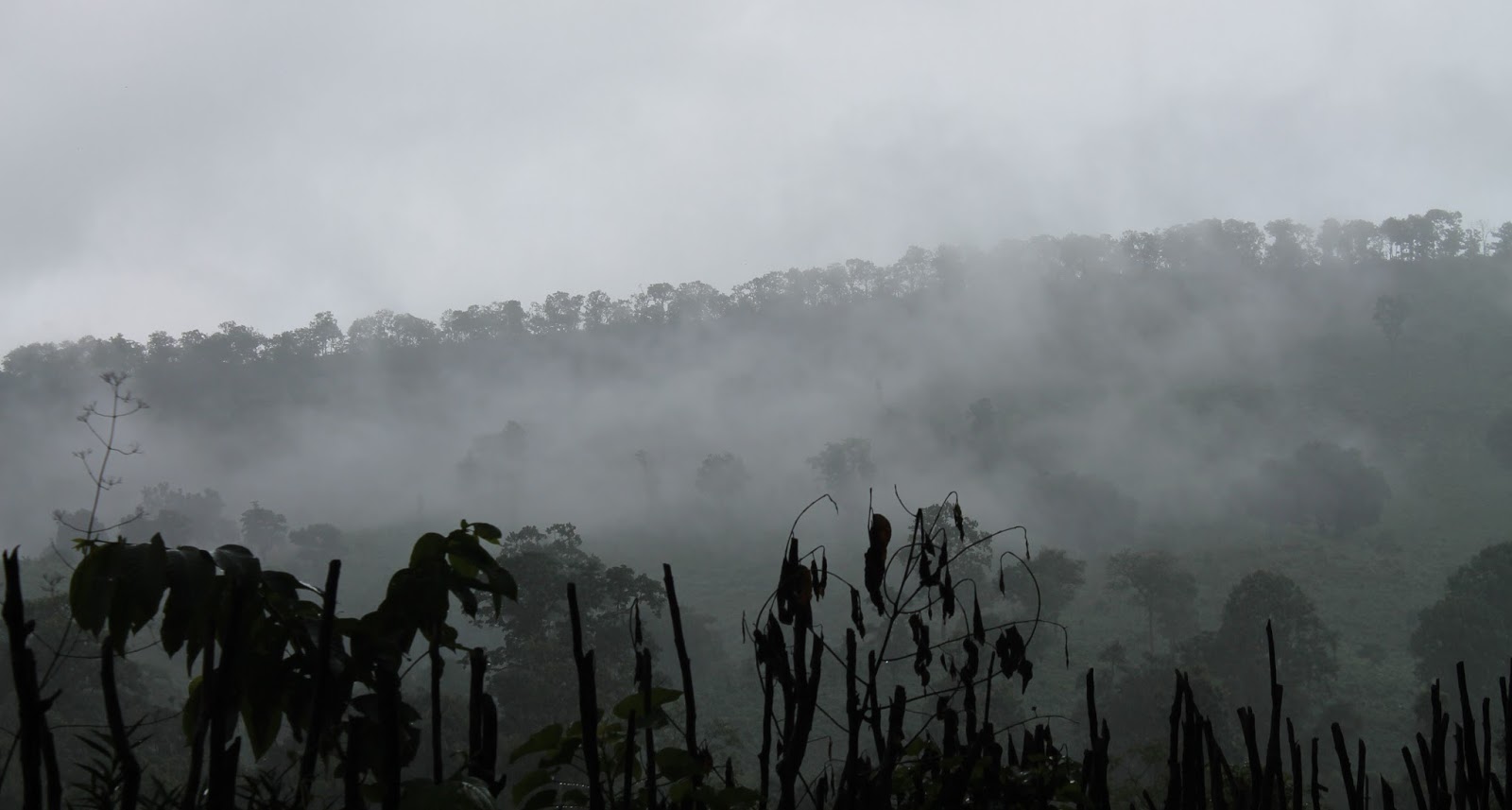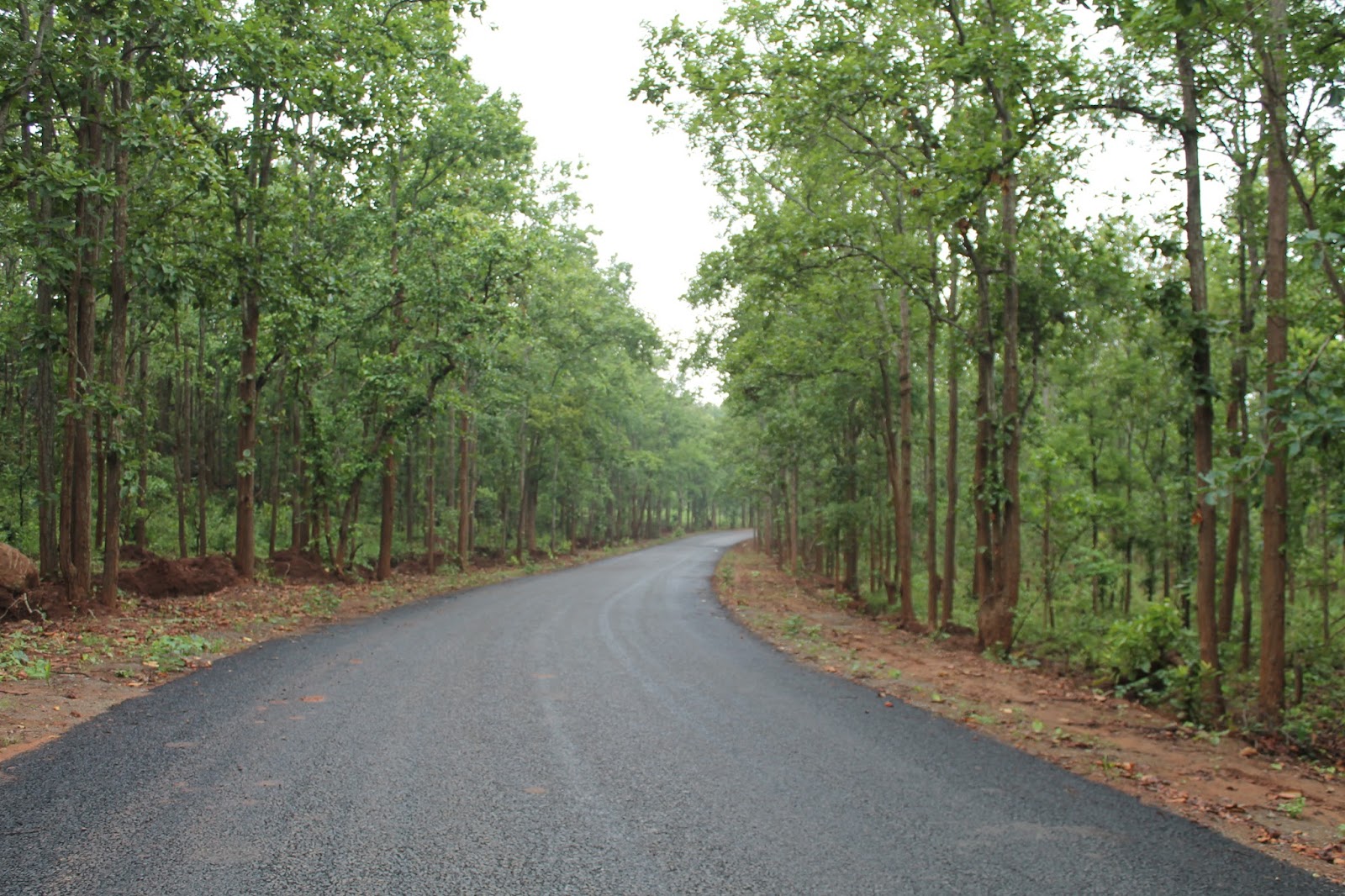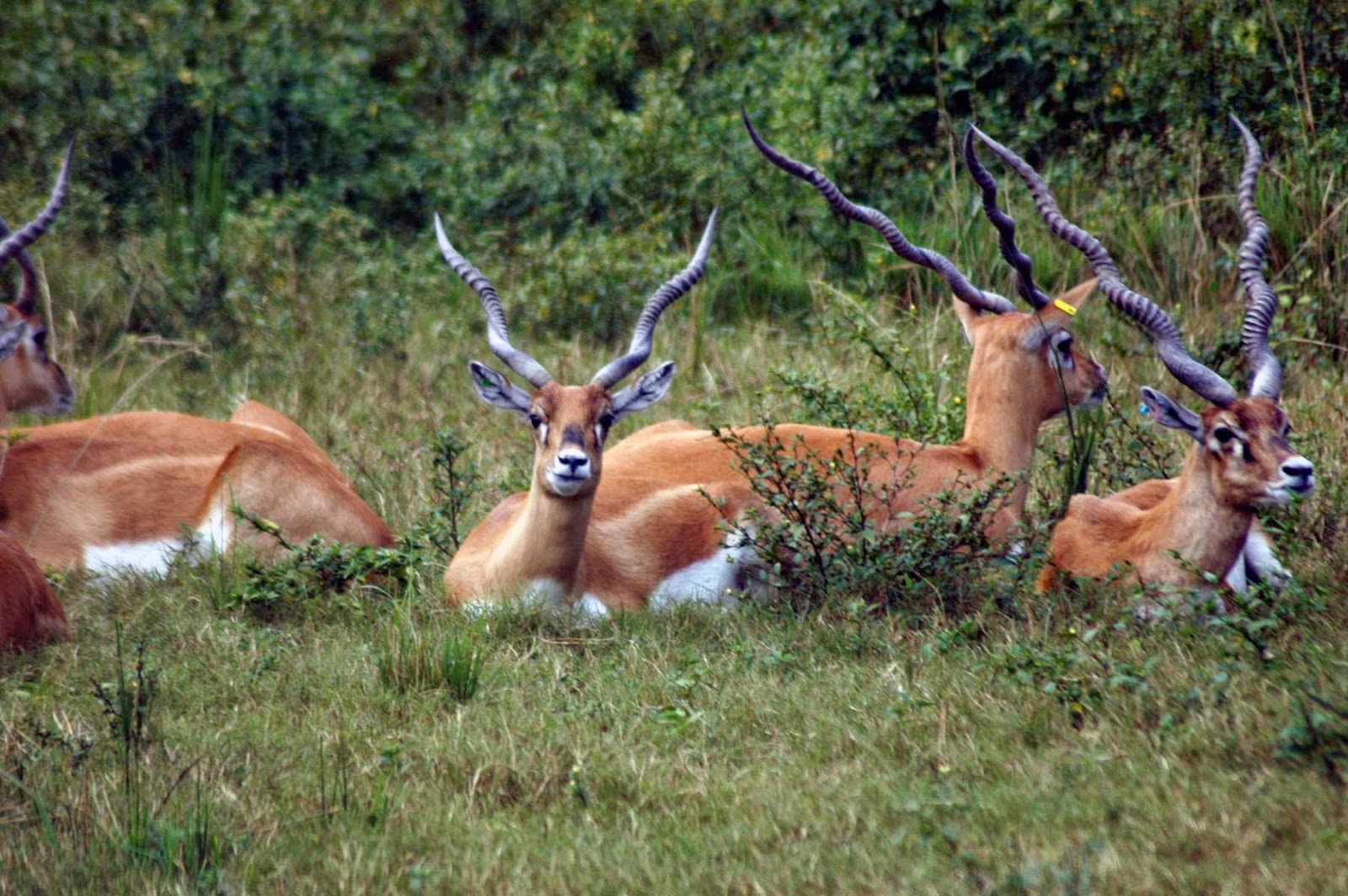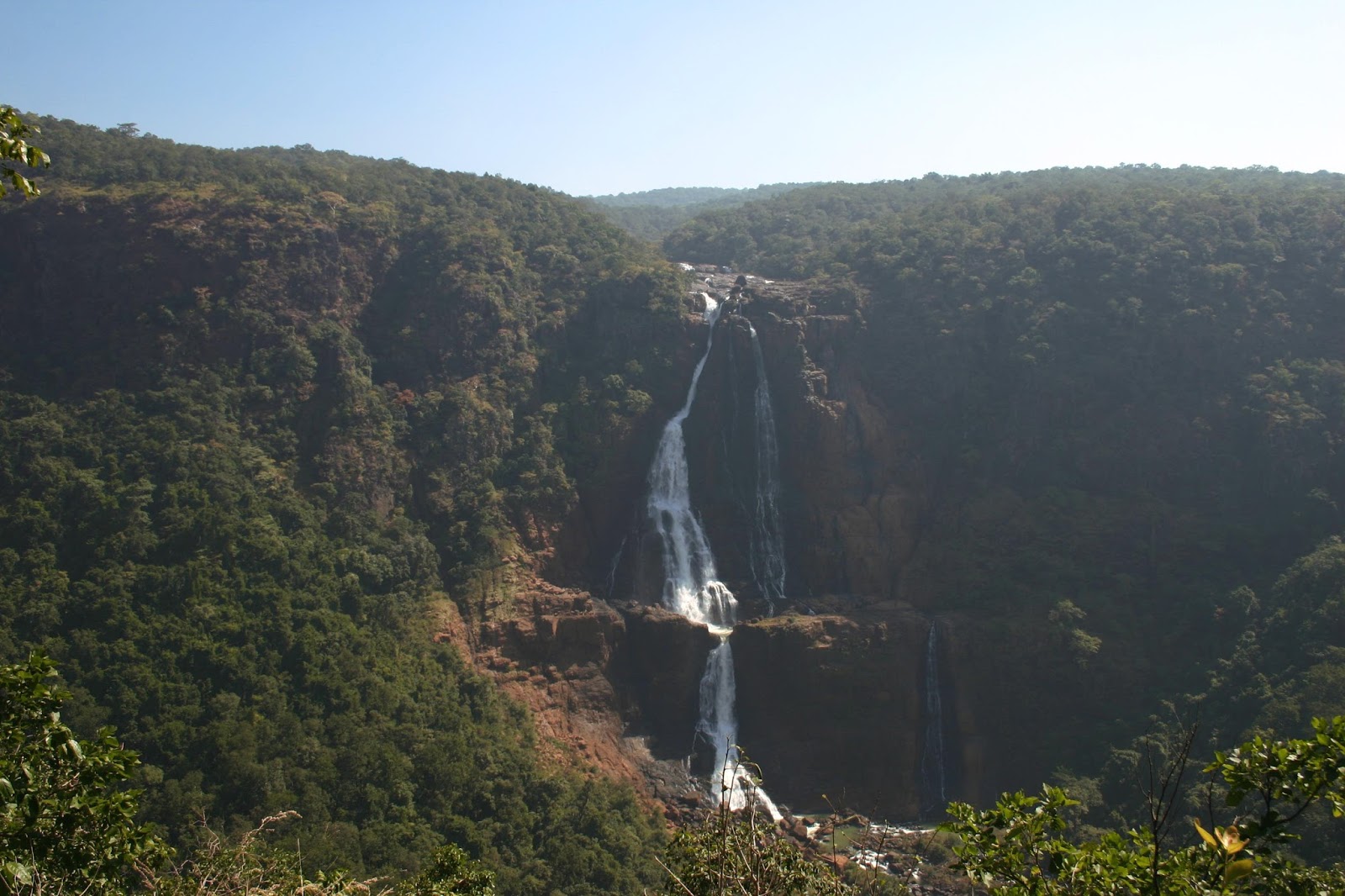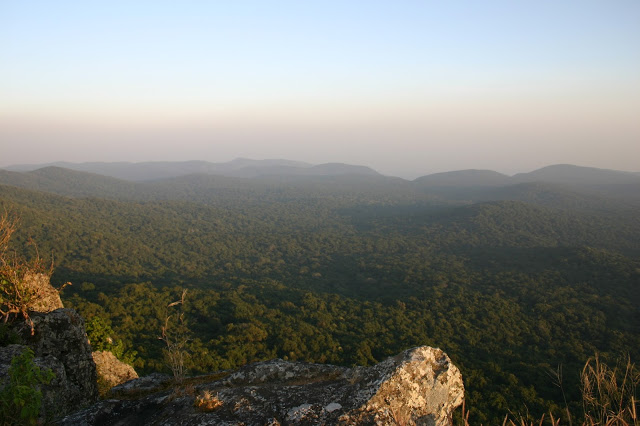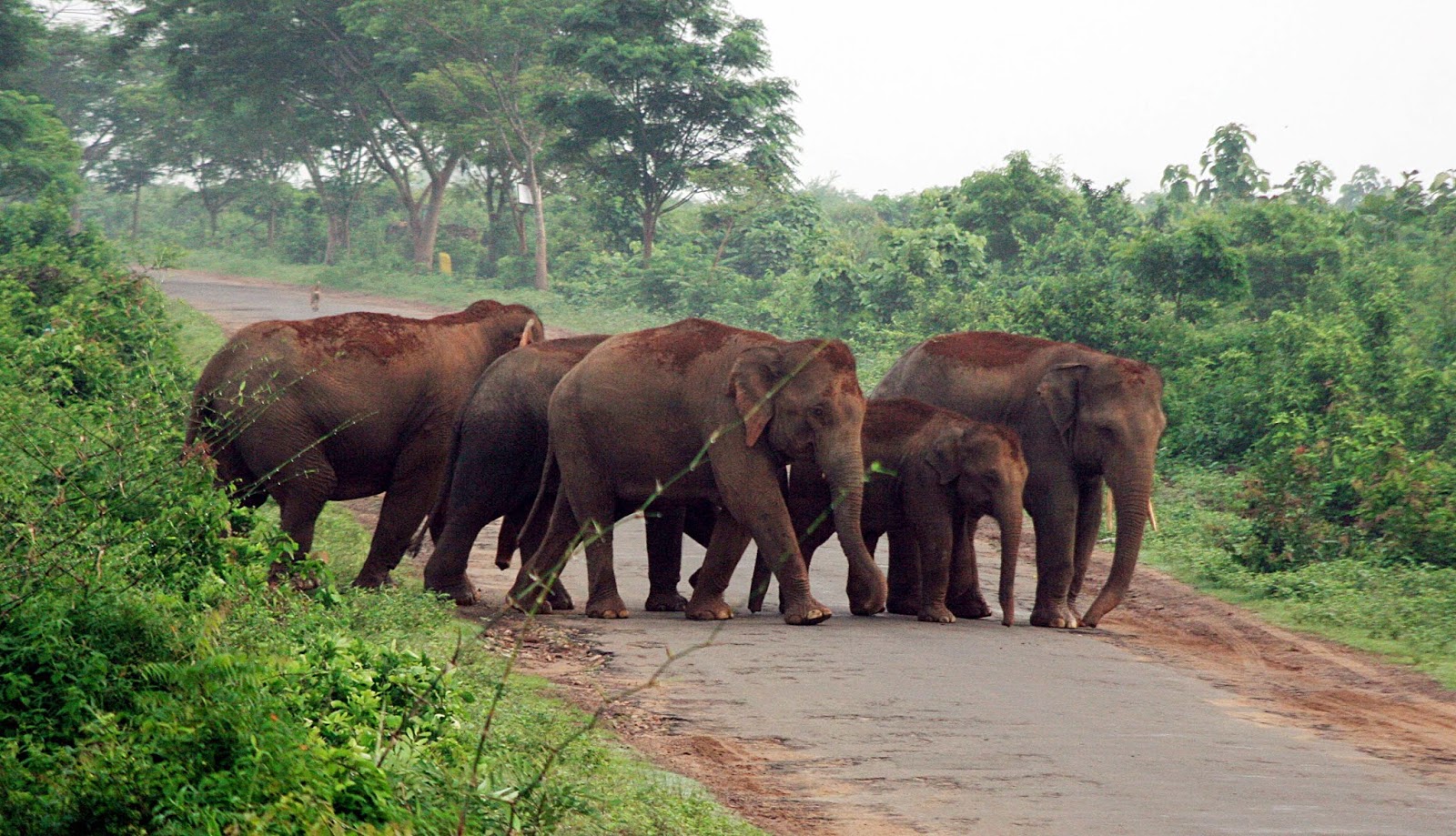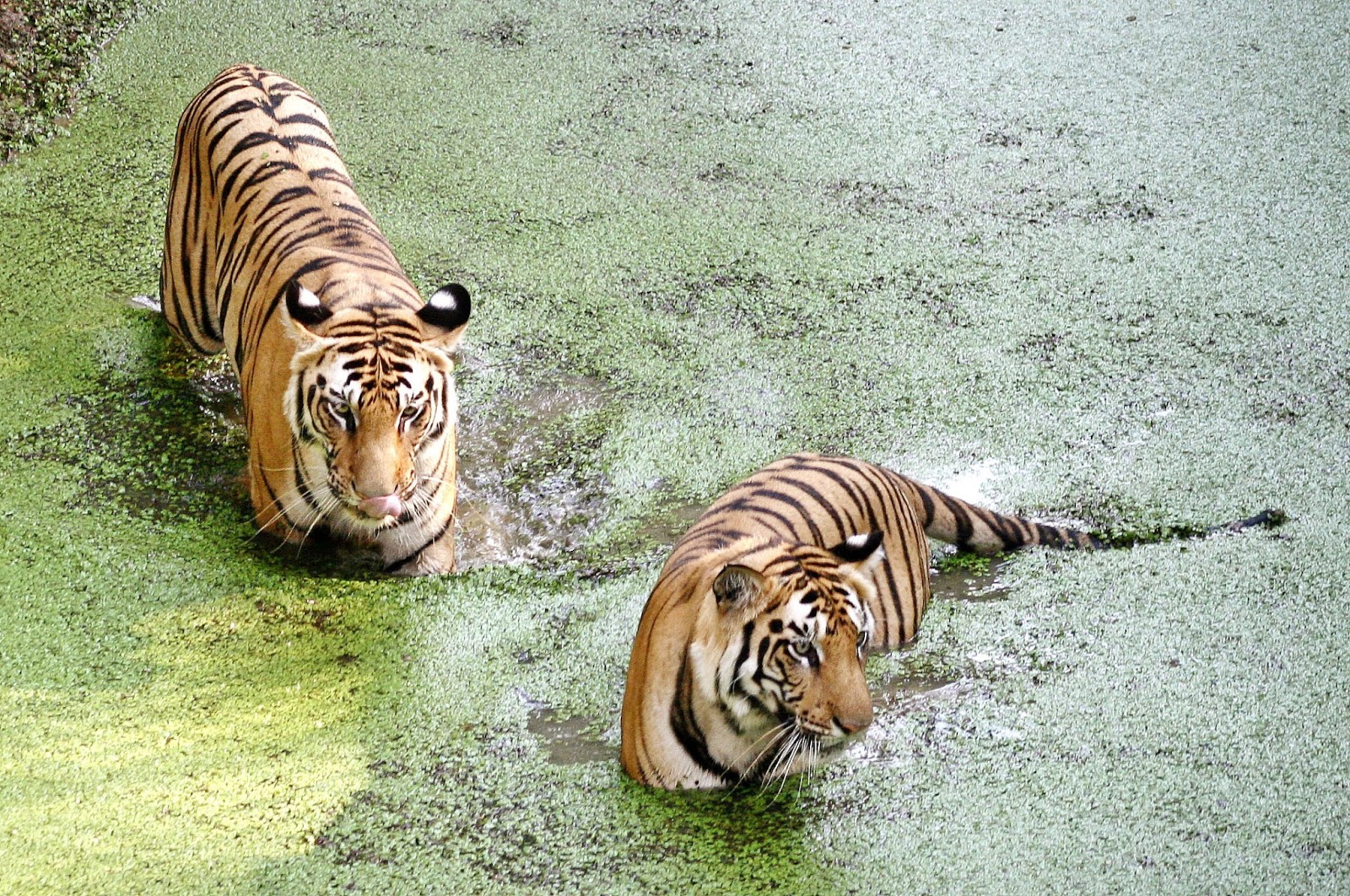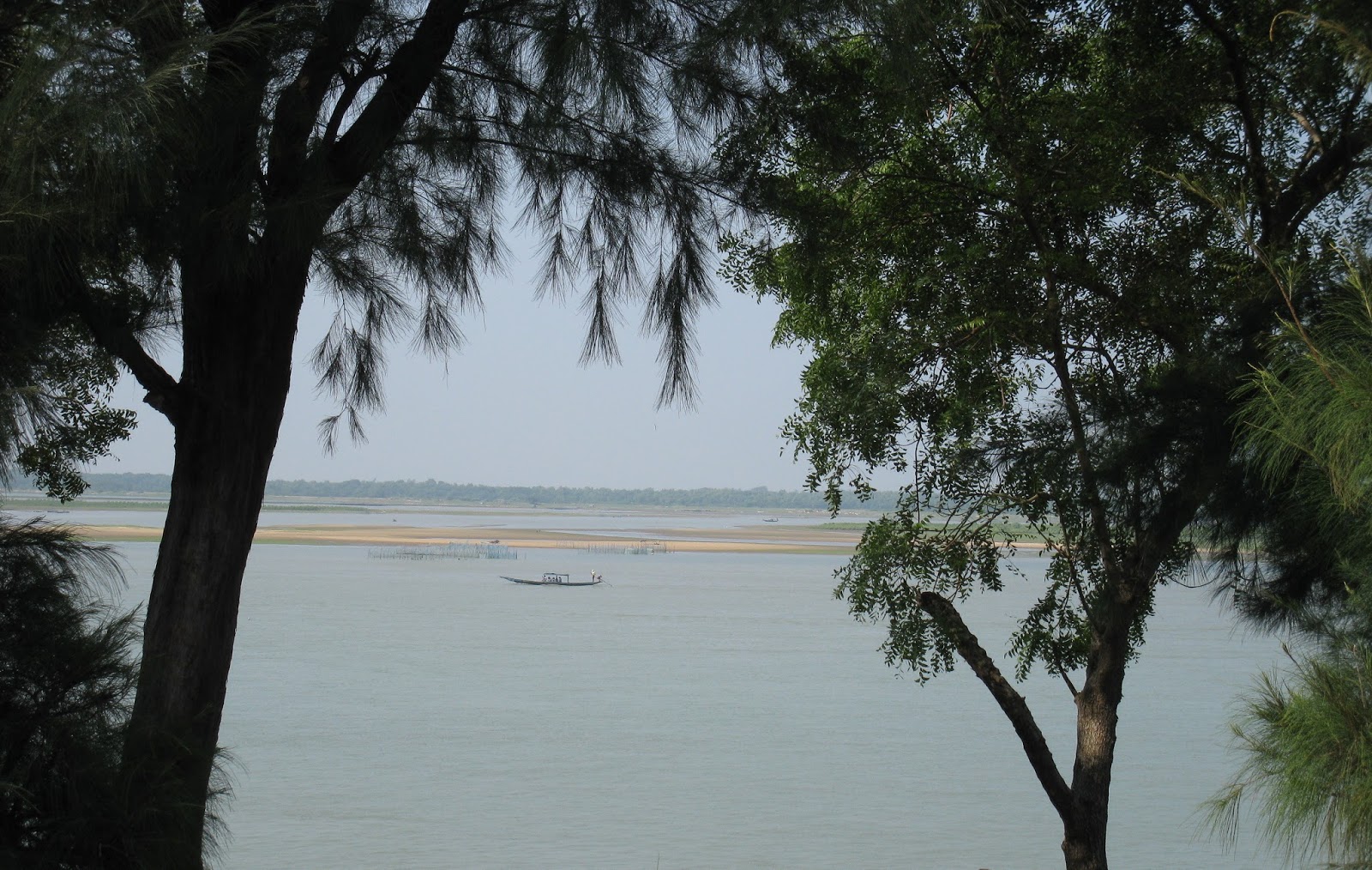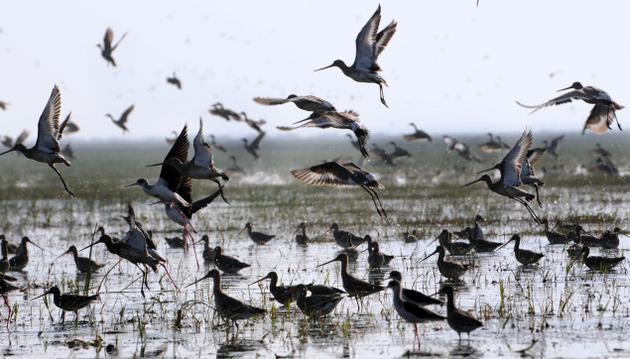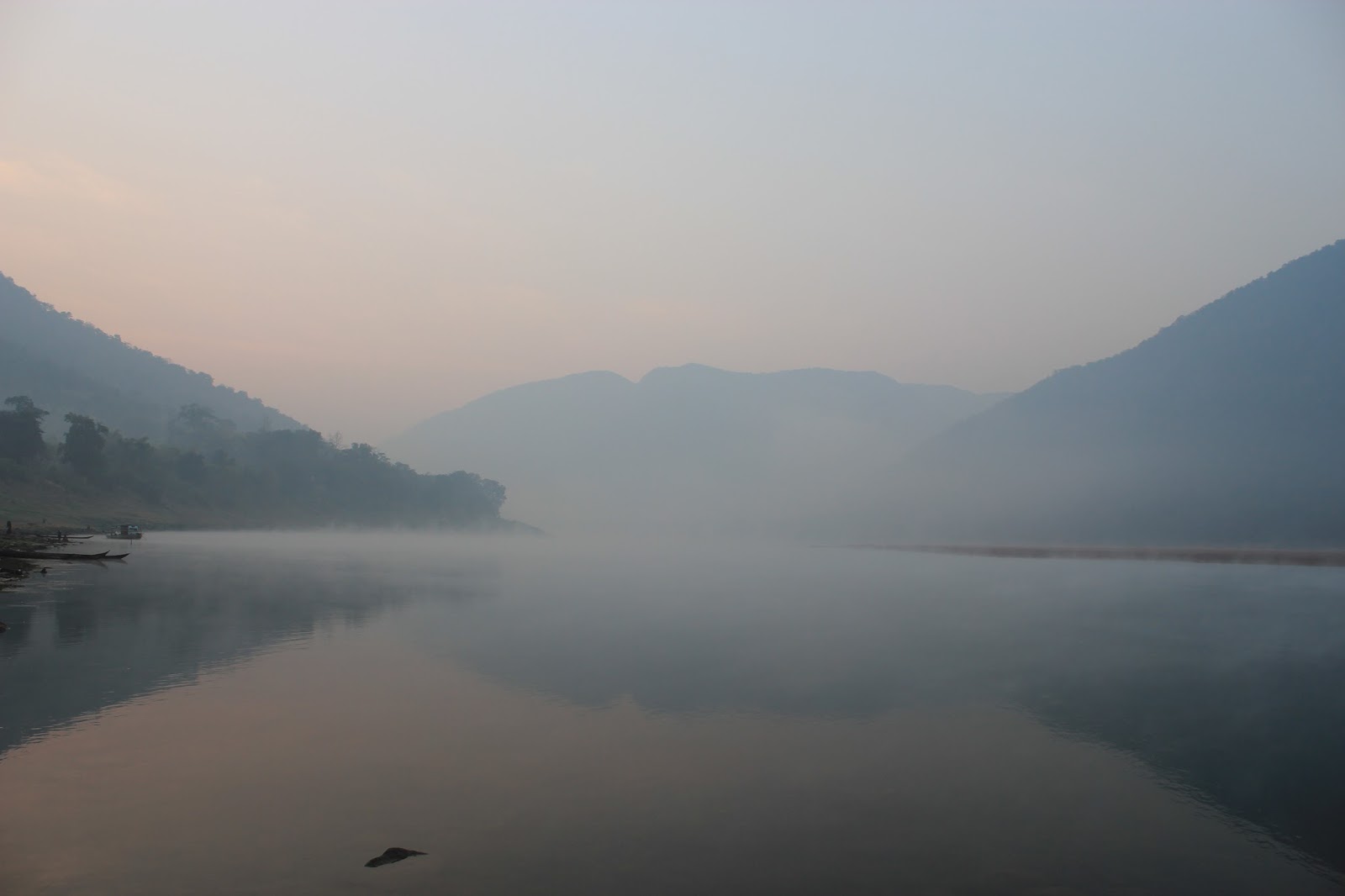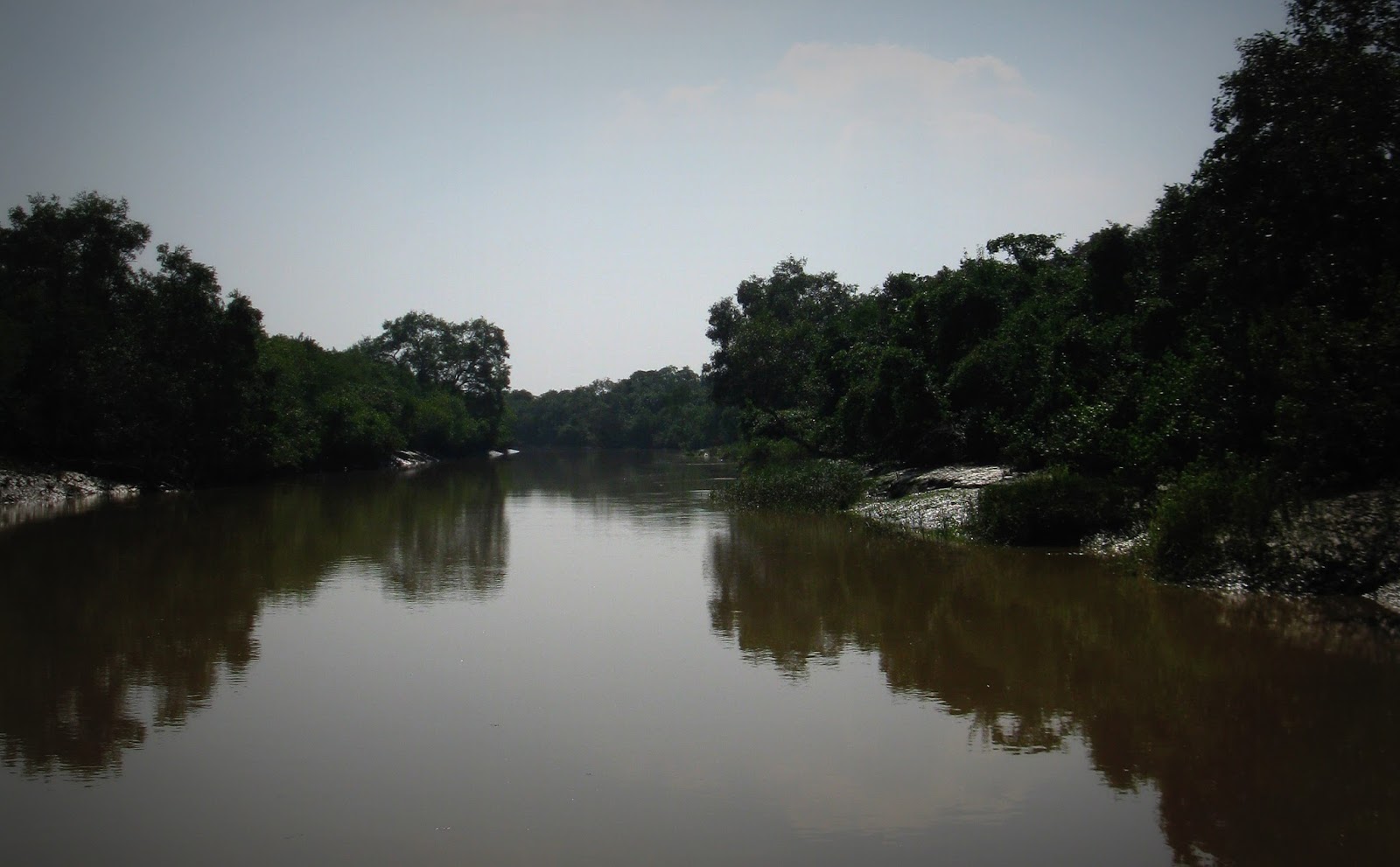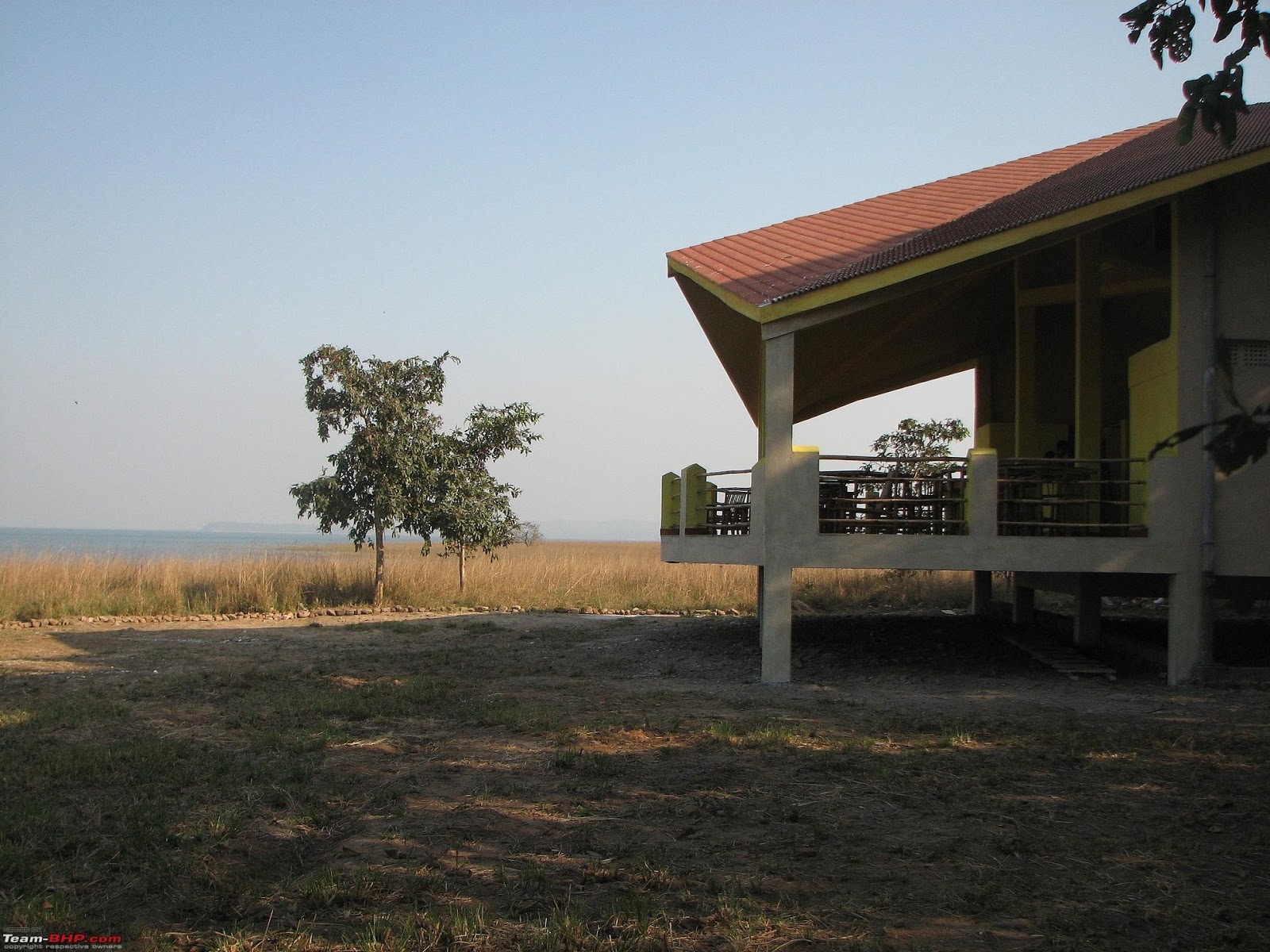Link to Personal Blog of Diana Sahu
Be it Asia’s largest brackish water of Lake Chilika, world’s second largest mangrove forest at Bhitarkanika or even the most picturesque gorge at Satkosia, Odisha has a lot in store for nature lovers. The State is actually a treasure trove of destinations for eco-tourism, where people can get up close and personal with nature. From lush jungles to wildlife habitats, Odisha is home to several places of unique biodiversity, and a variety of plants, birds and animals. Also, experience the lifestyle of communities who are committed to sustainable tourism and ensure that these destinations remain beautiful for several years to come.
1. Daringbadi – Odisha’s very own Kashmir – is a hill station located in Kandhamal district of the state. Covered with pine forests and located at an altitude of 3000 ft, this is the only place in Odisha which gets snowfall during extreme winter. In the winter months, the temperature here even plummets to zero Degree Celsius. Daringbadi is blessed with green valleys that are cloud-kissed during monsoon, and the hill station also has scope for tribal tourism. Old timers say Britishers used to visit Daringbadi during summer to enjoy the nature’s bounty.
In the hill station, visit Dabubadi, which has a recreation centre or drive through pine plantations to the Daringbadi hill top to get a bird’s eye view of the stunning vistas. The hill station has coffee plantations that stretch up to 22 km of the hill station. The other major attractions here are the Putudi Waterfall, black pepper and turmeric plantations and Belghar Sanctuary, 50 km away. The best time to visit this small hill station is between the months of November and July. One of the interesting accommodation options is DEERS (Daringbadi Eco Lodge). Here, they serve organic food and there is facility for a bonfire in the evening and a guided nature walk. The nearest railway station is at Berhampur and closest airport is at Bhubaneswar.
In the hill station, visit Dabubadi, which has a recreation centre or drive through pine plantations to the Daringbadi hill top to get a bird’s eye view of the stunning vistas. The hill station has coffee plantations that stretch up to 22 km of the hill station. The other major attractions here are the Putudi Waterfall, black pepper and turmeric plantations and Belghar Sanctuary, 50 km away. The best time to visit this small hill station is between the months of November and July. One of the interesting accommodation options is DEERS (Daringbadi Eco Lodge). Here, they serve organic food and there is facility for a bonfire in the evening and a guided nature walk. The nearest railway station is at Berhampur and closest airport is at Bhubaneswar.
2. Head to Bhetnoi, a small village in Ganjam district of Odisha and watch herds of the endangered black bucks (Antelope cervicapra) grazing playfully in verdant surroundings here. Every villager here lives with a purpose—conservation of black bucks. Hunting of black bucks is considered a crime and villagers have been protecting these beautiful creatures for over a century now, a practice that holds similarity with the Bishnoi community of Rajasthan.
The animals live in proximity with the human beings and villagers do not harm them even if they graze on the crops; for there is a socio-religious belief behind the conservation norm. Locals say Bhetnoi suffered from a long spell of drought several years ago. One day, villagers sighted a small herd of black bucks following which, the village got rain. Since then, they believe that the animals are harbingers of rain and bring prosperity to the village. Visitors can interact with members of the Black Bucks Protection Committee and know more about the conservation of these animals. Bhetnoi village is 71 km from Berhampur and 165 km south of Bhubaneswar. Visitors can hire a car from Berhampur to visit the village for a one-day tour. Accommodation options are available at Berhampur.
3. Spread out in an area of 282 sq km, Kuldiha Wildlife Sanctuary in Balasore district is a pristine forest land where one can sight cheetals, elephant herds, and Malabar giant squirrels among various other species of wildlife. The Kuldiha forest, covered with dense sal, rosewood, shimul trees and a host of parasitic trees, boasts of a rich flora and fauna. On the northwest direction of the sanctuary, there is Risia Dam, which provides an excellent opportunity for birding. There is a forest rest house deep inside the forest and at another spot—Jhorachua—located within the sanctuary; the latter has a watch tower nearby.
Prior permission is required from the Divisional Forest Office for booking accommodation in the forest rest houses. Panchalingeswar too is a beautiful picnic spot with a Shiva temple having five Shivalingas on a hilltop and a pond nearby surrounded by dense forest. Herds of elephants visit the pond in summer to drink water. For day visitors, the exit time from sanctuary is 5.30 pm. Visitors can stay overnight to experience the wildlife in abundance. There is no electricity and phone network inside the sanctuary. Summer is the best time to visit.
4. The Similipal Biosphere in Mayurbhanj district of Odisha is a nature lover’s delight. With a reserve forest area of over 2750 sq km, Similipal Wildlife Sanctuary is one of the biggest in the country. Housing a variety of wild animals, including Royal Bengal Tigers, 304 species of birds and plants, the sanctuary is extremely rich in biodiversity. The core area of Similipal Tiger Reserve extends up to 1194 sq km and the buffer area measures 1555 sq km. As per the last tiger census, Similipal has around 25 Royal Bengal Tigers and the biosphere is also home to Similipal-Kuldiha-Hadgarh elephant reserve.
Few months back, the authorities of Similipal Tiger Reserve set up an eco-tourism complex with bamboo cottages at Kumari near Gurguria within the sanctuary limits in addition to the two eco-complexes that are already operating at Gurguria and Jamuani. Reservations here can be done through the Deputy Director of Similipal Tiger Reserve (06792-259126) or www.toshaliresort.com. For day visitors, the Forest Department is now providing a 13-seater vehicle for tourists for visits within Similipal from Jashipur on the route Jashipur-Gurguria-Uski-Barehipani-Joranda-Chahala and back to Jashipur via Tulsibani at Rs. 5,550 per day. Every year, the sanctuary remains closed from June to November-end for monsoon and maintenance.
Even as the sanctuary remains closed during this period, nature lovers can enjoy Sitakund, Bhimkund and Devkund waterfalls located nearby. Within the sanctuary, there are two magnificent waterfalls, namely Bareipani and Joranda. Entry permits to the sanctuary have to be obtained from forest range officers of Jasipur and Pithabata. From Jasipur side, there are three entry routes and from Pithabata, tourists can enter the sanctuary from four entry points.
5. Chandaka-Dampara Sanctuary is considered a safe haven for elephants in Odisha. Located on the outskirts of Bhubaneswar, the Capital City of Odisha, the sanctuary spreads over an area of 193.39 sq km. The Forest Department, Government of Odisha, has been undertaking successful conservation of elephants in the sanctuary, which was notified in 1982. Apart from watching elephants here, one can visit several other places within the sanctuary. One of them is Godibari, the main entrance to Chandaka-Dampara Sanctuary. Godibari is located in between Daspur and Bhola forest on both sides of historical Grand Trunk Road that was built by Sher Shah Suri during 16th century.
Within the park, tourists can visit the Bharatpur reserve forest, Kochilaberena and Pitagadia where there are three watch towers. Tourists can watch elephants from the watch towers during the morning and noon hours. Besides, there is an ancient fort of King Chodaganga Dev that was built between 1078 and 1147 at Bualigarh nearby. For accommodation, there are forest rest houses at Deras and Dampara besides bamboo log huts at Deras and Godibari. The bamboo huts are priced at Rs. 1500 per night while the forest rest houses will cost Rs. 300 per night. These can be booked through the officer in-charge of Chandaka Wildlife Division, Bhubaneswar. Nearest railway station and airport is at Bhubaneswar.
Want to see elephant herds in verdant surroundings? Find them aplenty, drinking water or grazing near Deras and Jhumka. Nestled inside the Chandaka-Dampara Sanctuary, the two beautiful dams of Deras and Jhumka are located at around 15 km from Bhubaneswar. There are also two large water bodies at Deras and Kumarkhunti nearby where elephant herds can be seen. One can take a nature trail of 6.5 km on a path developed around Deras Dam, which stands surrounded by green mountains on three sides and a water body on the fourth. Established in the year 1967, Deras is popular picnic spot during winter. Jhumka, similarly, stands in the lap of nature and is an apt destination to sit back and enjoy the verdant landscape. One can easily reach Deras and Jhumka from Bhubaneswar by two-wheelers or four-wheelers.
6. The Nandankanan Zoological Park, nicknamed Garden of God, is a must visit for wildlife lovers. Located on the outskirts of Bhubaneswar, the 400-acre Nandankanan Zoo has around 1580 animals that include 634 mammals, 812 birds and 134 reptiles. This is a host zoo for white tigers and the only zoo in the country, which has Patas Monkeys, Eastern Rosella variety of parakeet and Open-billed Stork (it is the second largest heronry for Open billed Storks in Odisha). It is also the first zoo in the country where Gharials were born in captivity in the 80s. Special attractions here are the Bear Safari, Lion Safari and a unique White Tiger Safari. One can take a toy train ride within the park for just Rs 10 per head. Nandankanan currently has 34 tigers including White Tigers and Black or Melanistic Tigers.
After going round the zoo, take a boat ride in Kanjia Lake, a wetland of national importance located along the Nandankanan Zoological Park, or visit the State Botanical Garden on the opposite side of the lake. The park remains closed on Mondays and visiting hours are from 8 am to 5.30 pm. Entry fee for Indians is Rs 20 per person and for a foreign national, the charge is Rs 100. More than 2.5 million people visit Nandankanan every year.
7. Odisha is also home to around 100-odd endangered Irrawaddy Dolphins that can be seen at Satapada. At the Satapada Jetty, visitors can hire a boat and the boatman will take them into the endless blue expanse of Chilika Lake. The site also houses the Sea Mouth Island where Chilika Lake meets the Bay of Bengal. Watch the Irrawaddy Dolphins in the lake at the Dolphin Point and then head towards the island where the Chilika meets the Bay of Bengal. From the Dolphin Point, the Sea Mouth Island is one-hour of boat side. Get off the boat and take a stroll on the mouth of the sea or bite into freshly fried fish and crabs at small food kiosks on the spot. However, do not give in to the temptation of buying pearls from vendors there who claim to be taking them out fresh from oysters.
By road, Satapada is 110 km from Bhubaneswar and 50 km Puri. The best time of the day to take a boat ride in Satapada to watch dolphins is the morning. The Odisha Tourism Development Corporation (OTDC) organises Bhubaneswar-Puri-Satapada tours every month. A day trip to Satapada is enough but for those who want to stay back and witness the sunrise and sunset in Chilika Lake, there is just one accommodation option in the area. There is the OTDC-managed Yatri Nivas close to the Satpada Jetty where rooms can be booked online through www.otdc.in. Rooms can also be booked through tourist offices in Puri and Bhubaneswar.
8. Chilika, Asia’s largest brackish water lake, is a paradise for those interested in birding, fishing and boating. The lake spreads over 1000 sq km in the districts of Khurda, Puri and Ganjam and it houses a wide variety of flora and fauna in its brackish waters. Within Chilika, there are a number of places that will leave tourists mesmerised; Nalabana Bird sanctuary, Honeymoon Island, Kalijai, Balugaon and Mangaljodi, to name a few. Mangaljodi and Nalabana Bird Sanctuary are birdwatchers’ paradise. While Nalabana is a protection site of migratory birds, Mangaljodi is a community-based eco-tourism habitat where various rare birds along with regional and migratory avian species can be seen.
Interestingly, Mangaljodi village was earlier a haven for poachers but after the intervention of state and wildlife lovers, it has now turned into a beautiful bird paradise. Locals now eke out their living through eco-tourism and fishing. The best to visit Chilika is between October and February. Lakhs of migratory birds from the Himalayas, Sibera, Afghanistan, Iraq and Iran can be seen here during the winter months. One of the common avian guests arriving in the brackish water lake is the Flamingo. Tourists can also visit the Kalijai and Narayani temples within the lake, which have Goddess Kali and Goddess Durga as their presiding deities, respectively. Honeymoon Island, Breakfast Island and Beacon Island are three most important islands of Chilika where limbless lizards and other varieties of animals can be seen. The lake has three entry points—Barakul, Rambha and Balugaon—and for accommodation, OTDC has its Yatri Nivas properties in all the three places where rooms can be either booked online or in person. As far as food is concerned, the locally-prepared seafood is the best bet. The nearest airport is at Bhubaneswar and railhead at Balugaon. By road, Chilika is around 120 km from Bhubaneswar and taxis are easily available.
9. Satkosia is undoubtedly one of the most beautiful ecosystems in Odisha. It not only has a magnificent gorge over the River Mahanadi but is also a tiger reserve and a breeding centre for fresh water crocodiles, gharial and mugger. Located close by is the Baisipalli Sanctuary. In fact, the Satkosia Tiger Reserve comprises two wildlife sanctuaries—the Satkosia Gorge sanctuary and Baisipalli sanctuary—both spreading over four districts of Angul, Nayagarh, Cuttack and Boudh. While the tiger reserve spreads over an area of 963.87sq km, the core area is 523.61 sq km.
There are three entry points to Satkosia, namely Tikarapada, Chhotakei, and Purunakote. While boating in the permitted area of Mahanadi towards the gorge, one can sight fresh water turtles like Chitra indica and Aspidiretes gangeticus perched on the rocks besides, the massive gharials and muggers basking in the sun on the river bank. The river is surrounded by majestic mountains on both the sides. Even as there are forest rest houses in Chhotakei and Purunakote, the most beautiful accommodation units in Satkosia are the 10 eco-tents in Tikarpada, which are maintained by a group of tribal youths of Tikarpada village hired by the forest department for the purpose. The youths are extremely cordial and forthcoming; they not only maintain the tents and offer guided nature treks in the forest, but also cook for the visitors. On request, they catch fresh water fish from the river, which are cooked in an open kitchen for visitors.
Tourists can go round the Gharial Research and Conservation Unit in Tikarpada where young sub-adult gharials are reared in captivity. A similar facility has been set up by the Satkosia Wildlife Division at Tarava village where local communities play host to the nature enthusiasts. Bookings for the forest rest houses and the eco-tents can be done through www.satkosia.org. The Satkosia eco-system is around 200 km from Bhubaneswar, which has the nearest airport link. If travelling by road from Bhubaneswar, one has to take the NH-6 till Cuttack and then divert to NH-42 towards Dhenkanal and Angul. Permit to enter Satkosia has to be obtained at the Divisional Forest Office at Angul and then proceed towards Pampasar, the main entry gate.
10. Cruise through snaking rivers with dark mangrove forests on both the sides and witness giant crocodiles basking in the sun on the river banks at Bhitarkanika National Park. Considered the second largest mangrove forest in the country after the Sunderbans, Bhitarkanika promises to be an enthralling experience. It is home to over 1600 salt-water crocodiles besides, sambars, spotted deer, monitor lizards and rhesus monkeys. One of the prime attractions of the park is the 22-feet crocodile named Kaalia. The marshy wetlands at Bhitarkanika are surrounded by three rivers—Baitarani, Brahmani and Dhamra—and have around 60 to 70 varieties of mangroves. While the national park spreads over an area of 650 sq km, it has a mangrove forest cover of 115 sq km.
Every year during the winter and monsoon, the park plays host to lakhs of migratory birds like intermediary egret, large egret, grey heron, darter, purple heron and cormorant. Bagagahana and Saribana—considered ornithologist’ paradise—are the spots within the park where the residential and migratory birds can be seen. At Bagagahana, one can easily sight the white bellied sea eagle (Haliaeetus leucogaster), an endangered species. The Gahirmatha beach within the national park is the largest rookery in Odisha. Around three km away from Gahirmatha is the Dangamal Island, which houses the Captive Breeding & Research Centre for estuarine crocodiles. Here, one can also see India’s only female albino captive white crocodile, Gori, and spot deer grazing. Khola and Gupti are the two main entry points to Bhitarkanika and visitors need to collect entry permits before proceeding.
By road, Khola and Gupti points are 160 km from Bhubaneswar and 140 km from Cuttack. From Bhadrak side, Bhitarkanika is just 55 km by road. Boating services along with guides are available at these two spots. Best time to visit is October to February when one can also sight the olive ridleys and migratory birds in the sanctuary. For accommodation, there are Swiss cottages by Sand & Pebbles (www.bhitarkanikanationalpark.com) and a forest rest house at Dangamal. The national park has now been proposed to be included in the list of World Heritage Sites.
11. Nestled along the Hirakud reservoir, the Debrigarh Wildlife Sanctuary houses a varied flora and fauna. It comprises Debrigarh and Lohara reserve forests under the Barapahad hills of Bargarh district in Western Odisha. Among all kinds of animals found here, Indian gaur (bison) and four-horned antelope or chousingha can be easily seen in the sanctuary, which was established by the government in 1930. There are around 500 endangered four-horned antelopes in the Debrigarh forests.
Tourism inside the sanctuary is entirely managed by people of four villages. Boating facility can be availed in the protected area of the sanctuary. One of the popular sites within the sanctuary is the waterfall named Ushakothi. There is a historical side to Debrigarh sanctuary as well. During the freedom struggle, freedom fighter Veer Surendra Sai hid himself in the forests on the hilltop of Barapahar and fought a war against the British. He was captured by the British from his hideout inside the sanctuary. The total sanctuary area is 353.81 sq km and best time to visit is from November to April.
Entry point to the sanctuary is Dhodrokusum. There are six eco-tourism cottages in the sanctuary at Barkhandia and each cottage would cost Rs. 1600 per night, which would include breakfast, lunch and dinner. Accommodation is available at the Forest Rest Houses in Dhodrokusum and Dechua at Rs. 200 per day. There is however, no specific provision of guides in the sanctuary. Other places of interest nearby the sanctuary are the Hirakud Dam (15 km away) and the Leaning Temple of Lord Bimaleswar at Human (65 km away). Hirakud Dam is the largest manmade water body in Asia and covers one third of the landscape boundary on the eastern side of the sanctuary. During winter, a large number of migratory birds flock the reservoir.
This guide appeared in travel website, Happy Trips. Here’s the link – http://www.happytrips.com/orissa/travel-guide/places-to-visit-in-odisha-for-nature-lovers/gs48809322.cms

